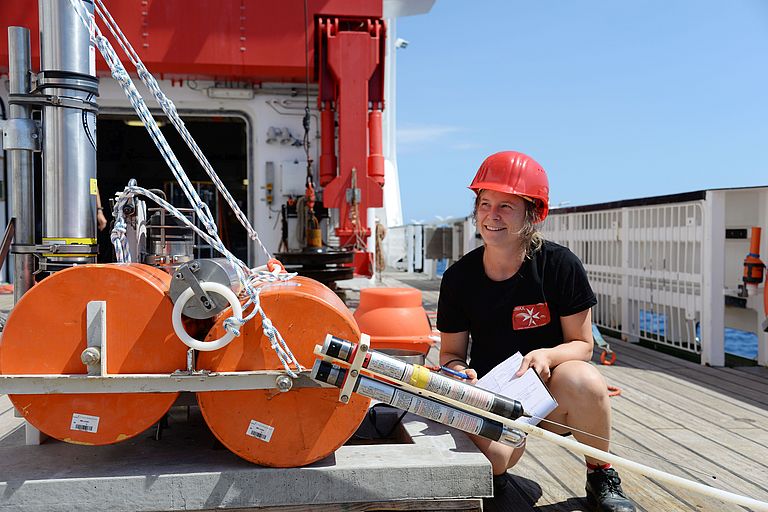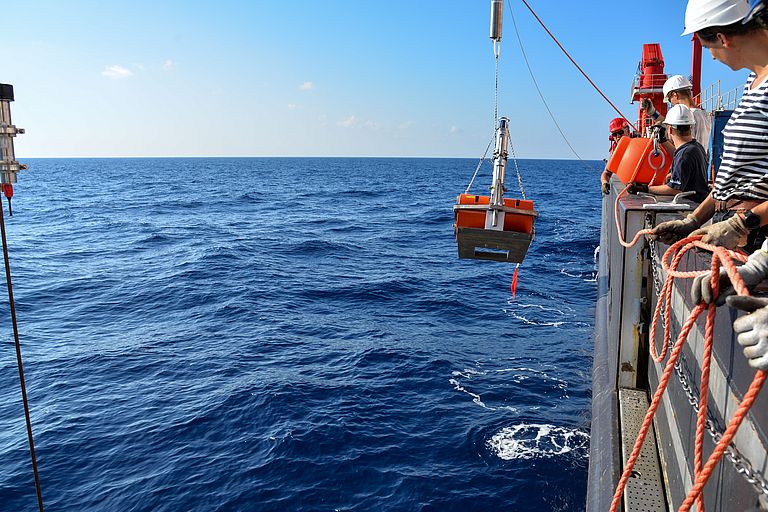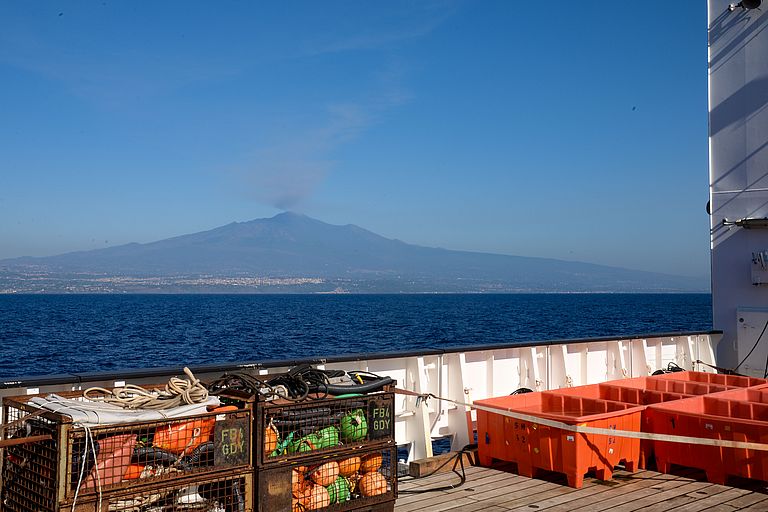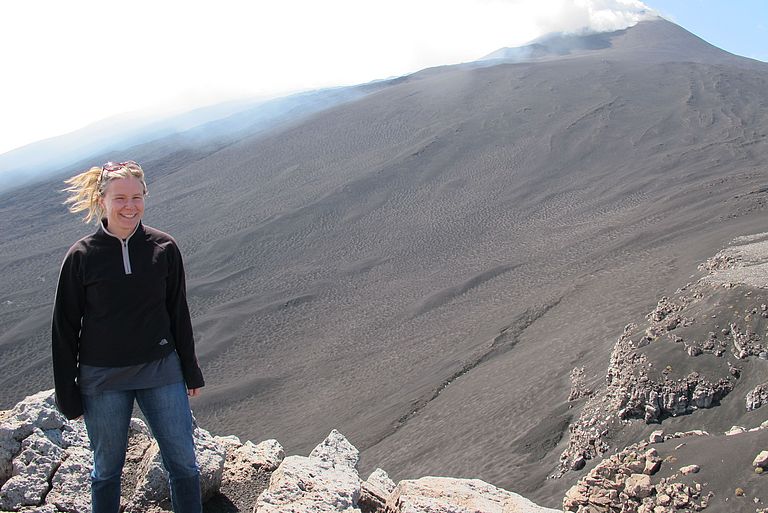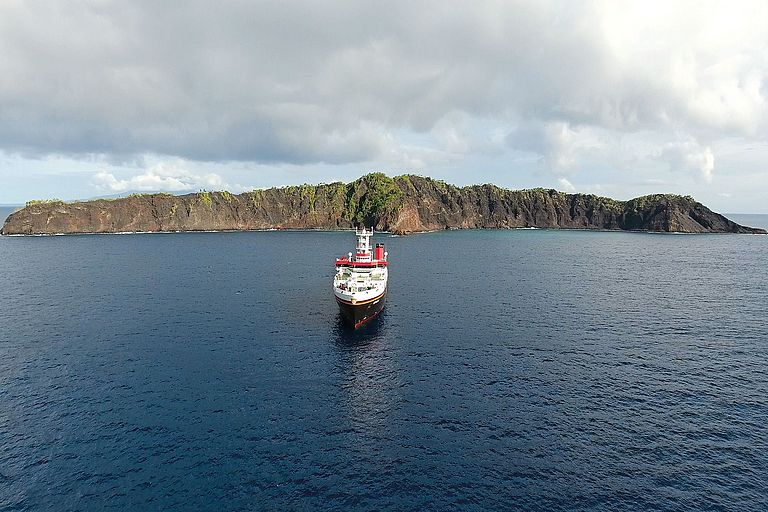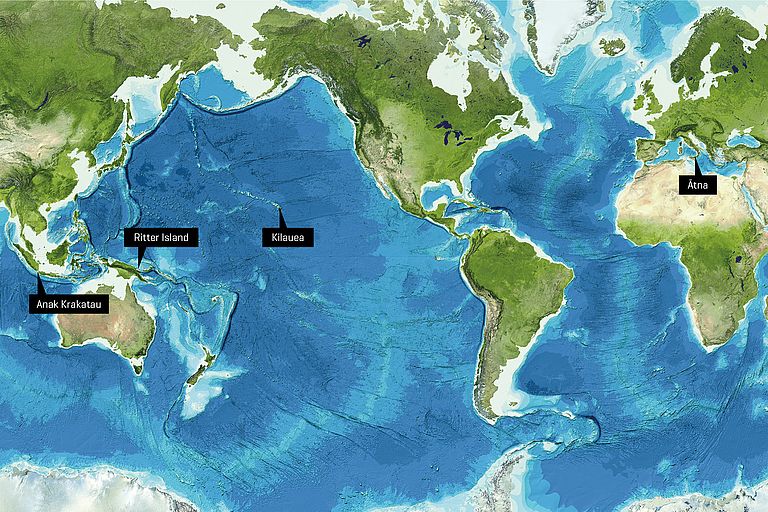How dangerous are coastal and ocean island volcanoes?
GEOMAR scientist Dr. Morelia Urlaub received a prestigious Starting Grant from the European Research Council to study volcanic flank collapses
At the end of 2018, an article in the scientific journal Science Advances received a lot of international attention within the scientific community and even beyond. Researchers from Kiel were able to demonstrate for the first time that the eastern flank of the volcano Etna, located at the East coast of Sicily, slowly slides downwards into the Mediterranean Sea. Such movements are discussed as early indication of an impending collapse of the volcano's flank at some point in the future. Such a collapse would most likely lead to a tsunami.
Whether such slow flank movements are indeed precursors of a future collapse and how acute the danger for the surrounding coastal regions actually is, can, however, not be answered with the current knowledge. This is partly because the largest part of ocean island and coastal volcanoes is often situated below water where monitoring is challenging. Only recent technological developments in deep-sea research now provide methods to measure movement of volcanic flanks in the ocean.
In order to advance knowledge of flank collapses at volcanic islands, Dr. Morelia Urlaub of the GEOMAR Helmholtz Centre for Ocean Research Kiel, the lead author of the 2018 study, successfully applied for one of the prestigious Starting Grants of the European Research Council (ERC). On 1 February, the PRE-COLLAPSE project ("Slow sliding of volcanic flanks as PREcursor to catastrophic COLLAPSE ") will now officially begin, with Dr. Urlaub receiving a total of 1.5 million euros for her research over the next five years.
The good news of the successful grant reached Dr. Urlaub back in the late summer of 2020, when she deployed seafloor instruments at the foot of Mount Etna with the research vessel SONNE. “That was a fantastic moment. After all, the Starting Grant is not only a great confirmation of our previous work at GEOMAR. I looked at Mount Etna from the ship and knew that my team and I will have great new opportunities to better understand Etna and other volcanoes in the coming years,” Dr. Urlaub recalls.
Her project will focus on the volcanoes Etna (Italy), Anak Krakatau (Indonesia), Ritter Island (Papua New Guinea) and Kilauea (Hawaii, USA). Field measurements, numerical models, and laboratory experiments on volcanic rocks combined will shed light on the mechanisms that can trigger flank collapses. The seafloor instruments deployed on Etna in 2020 will also contribute important data to the project. “The instruments are part of the GeoSEA programme at GEOMAR. They measure the distance to each other very precisely over long distances and thus provide information about movements of the seafloor,” explains Morelia Urlaub.
The geoscientist has been working at GEOMAR since 2013. After graduating from the University of Bremen, she completed her PhD at the University of Southampton (UK) and worked at the British National Oceanography Centre before moving to Kiel. Dr. Urlaub's area of expertise is submarine natural hazards such as landslides, volcano flank collapses and their consequences. In 2020, her project PRE-COLLAPSE was among a total of 189 newly approved ERC Starting Grants across Europe in the field of natural sciences and engineering. They were matched by 1409 applications.
